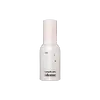What's inside
What's inside
 Key Ingredients
Key Ingredients

 Benefits
Benefits

 Concerns
Concerns

 Ingredients Side-by-side
Ingredients Side-by-side

Hydrogenated Polydecene
EmollientHydrogenated Polyisobutene
EmollientRicinus Communis Seed Oil
MaskingEthylene/Propylene Copolymer
AbrasiveEthylhexyl Olivate
Skin ConditioningPolyglyceryl-4 Diisostearate/Polyhydroxystearate/Sebacate
EmulsifyingParfum
MaskingCaprylyl Glycol
EmollientDiisostearyl Malate
EmollientArgania Spinosa Kernel Oil
EmollientOctyldodecyl Stearoyl Stearate
EmollientEthylhexylglycerin
Skin ConditioningPersea Gratissima Oil
Skin ConditioningCI 77891
Cosmetic Colorant1,2-Hexanediol
Skin ConditioningCI 77007
Cosmetic ColorantCI 77491
Cosmetic ColorantHydrolyzed Hyaluronic Acid
HumectantHydrogenated Polydecene, Hydrogenated Polyisobutene, Ricinus Communis Seed Oil, Ethylene/Propylene Copolymer, Ethylhexyl Olivate, Polyglyceryl-4 Diisostearate/Polyhydroxystearate/Sebacate, Parfum, Caprylyl Glycol, Diisostearyl Malate, Argania Spinosa Kernel Oil, Octyldodecyl Stearoyl Stearate, Ethylhexylglycerin, Persea Gratissima Oil, CI 77891, 1,2-Hexanediol, CI 77007, CI 77491, Hydrolyzed Hyaluronic Acid
Water
Skin ConditioningDipropylene Glycol
HumectantAlcohol Denat.
AntimicrobialNiacinamide
SmoothingBetaine
HumectantGlycerin
Humectant1,2-Hexanediol
Skin ConditioningPolyglyceryl-10 Stearate
Skin ConditioningGlycereth-26
HumectantPolyurethane-15
Cetearyl Alcohol
EmollientCarbomer
Emulsion StabilisingTromethamine
BufferingCeramide NP
Skin ConditioningTriethylhexanoin
MaskingEthylhexylglycerin
Skin ConditioningAcrylates/C10-30 Alkyl Acrylate Crosspolymer
Emulsion StabilisingHydroxyethylcellulose
Emulsion StabilisingAdenosine
Skin ConditioningParfum
MaskingSqualane
EmollientPhospholipids
Skin ConditioningHydrogenated Polydecene
EmollientDisodium EDTA
Cholesterol
EmollientCalcium Titanium Borosilicate
AbrasivePhytosphingosine
Skin ConditioningTheobroma Cacao Extract
Skin ConditioningDextrin
AbsorbentCI 77891
Cosmetic ColorantCI 77491
Cosmetic ColorantButylene Glycol
HumectantPolysorbate 60
EmulsifyingDisodium Phosphate
BufferingCI 19140
Cosmetic ColorantTin Oxide
AbrasivePanthenol
Skin ConditioningCarthamus Tinctorius Seed Oil
MaskingButyl Avocadate
Skin ConditioningSodium Phosphate
BufferingEnantia Chlorantha Bark Extract
Skin ConditioningCalendula Officinalis Flower Extract
MaskingSpiraea Ulmaria Extract
AstringentPunica Granatum Pericarp Extract
Skin ConditioningTocopherol
AntioxidantPortulaca Oleracea Extract
Skin ConditioningHyaluronic Acid
HumectantOleanolic Acid
Skin ConditioningHydrolyzed Hyaluronic Acid
HumectantSodium Hyaluronate
HumectantWater, Dipropylene Glycol, Alcohol Denat., Niacinamide, Betaine, Glycerin, 1,2-Hexanediol, Polyglyceryl-10 Stearate, Glycereth-26, Polyurethane-15, Cetearyl Alcohol, Carbomer, Tromethamine, Ceramide NP, Triethylhexanoin, Ethylhexylglycerin, Acrylates/C10-30 Alkyl Acrylate Crosspolymer, Hydroxyethylcellulose, Adenosine, Parfum, Squalane, Phospholipids, Hydrogenated Polydecene, Disodium EDTA, Cholesterol, Calcium Titanium Borosilicate, Phytosphingosine, Theobroma Cacao Extract, Dextrin, CI 77891, CI 77491, Butylene Glycol, Polysorbate 60, Disodium Phosphate, CI 19140, Tin Oxide, Panthenol, Carthamus Tinctorius Seed Oil, Butyl Avocadate, Sodium Phosphate, Enantia Chlorantha Bark Extract, Calendula Officinalis Flower Extract, Spiraea Ulmaria Extract, Punica Granatum Pericarp Extract, Tocopherol, Portulaca Oleracea Extract, Hyaluronic Acid, Oleanolic Acid, Hydrolyzed Hyaluronic Acid, Sodium Hyaluronate
 Reviews
Reviews

Alternatives
Ingredients Explained
These ingredients are found in both products.
Ingredients higher up in an ingredient list are typically present in a larger amount.
1,2-Hexanediol is a synthetic liquid and another multi-functional powerhouse.
It is a:
- Humectant, drawing moisture into the skin
- Emollient, helping to soften skin
- Solvent, dispersing and stabilizing formulas
- Preservative booster, enhancing the antimicrobial activity of other preservatives
Ci 77491 is also hydrated iron III oxide. It's sole purpose is to give a red/pink hue to products.
Iron III oxides are classified as inorganic chemicals for coloring.
Synthetically created Ci 77491 is considered safer than those naturally found. This is because the synthetically created version may contain less impurities. Iron oxides are generally non-toxic and non-allergenic.
Learn more about CI 77491Ci 77891 is a white pigment from Titanium dioxide. It is naturally found in minerals such as rutile and ilmenite.
It's main function is to add a white color to cosmetics. It can also be mixed with other colors to create different shades.
Ci 77891 is commonly found in sunscreens due to its ability to block UV rays.
Learn more about CI 77891Ethylhexylglycerin (we can't pronounce this either) is commonly used as a preservative and skin softener. It is derived from glyceryl.
You might see Ethylhexylglycerin often paired with other preservatives such as phenoxyethanol. Ethylhexylglycerin has been found to increase the effectiveness of these other preservatives.
Hydrogenated Polydecene is an emollient. It creates a non-occlusive film on the skin that offers extra protection for your skin barrier.
The texture of Hydrogenated Polydecene ranges from light and silky to rich.
Hydrogenated Polydecene is the end compound of controlled hydrogenation of Polydecene.
Learn more about Hydrogenated PolydeceneHydrolyzed Hyaluronic Acid is a form of hyaluronic acid. It is created by the hydrolysis of hyaluronic acid with a high molecular weight. Once created, Hydrolyzed Hyaluronic Acid has a low molecular weight.
Low molecular weight HA has been shown to hydrate and increase elasticity of the skin. Increasing elasticity is also associated with reduction of wrinkle depth.
One study found topical low molecular weight hyaluronic acid may be considered for the treatment of rosacea in the adult population. However, we always recommend speaking with a professional about your skin concerns.
Hyaluronic acids are a humectant. This means they draw moisture from the air. Hyaluronic acids help moisturize, soothe, and protect the skin.
Read more about other common forms of hyaluronic acid:
Learn more about Hydrolyzed Hyaluronic AcidParfum is a catch-all term for an ingredient or more that is used to give a scent to products.
Also called "fragrance", this ingredient can be a blend of hundreds of chemicals or plant oils. This means every product with "fragrance" or "parfum" in the ingredients list is a different mixture.
For instance, Habanolide is a proprietary trade name for a specific aroma chemical. When used as a fragrance ingredient in cosmetics, most aroma chemicals fall under the broad labeling category of “FRAGRANCE” or “PARFUM” according to EU and US regulations.
The term 'parfum' or 'fragrance' is not regulated in many countries. In many cases, it is up to the brand to define this term.
For instance, many brands choose to label themselves as "fragrance-free" because they are not using synthetic fragrances. However, their products may still contain ingredients such as essential oils that are considered a fragrance by INCI standards.
One example is Calendula flower extract. Calendula is an essential oil that still imparts a scent or 'fragrance'.
Depending on the blend, the ingredients in the mixture can cause allergies and sensitivities on the skin. Some ingredients that are known EU allergens include linalool and citronellol.
Parfum can also be used to mask or cover an unpleasant scent.
The bottom line is: not all fragrances/parfum/ingredients are created equally. If you are worried about fragrances, we recommend taking a closer look at an ingredient. And of course, we always recommend speaking with a professional.
Learn more about Parfum